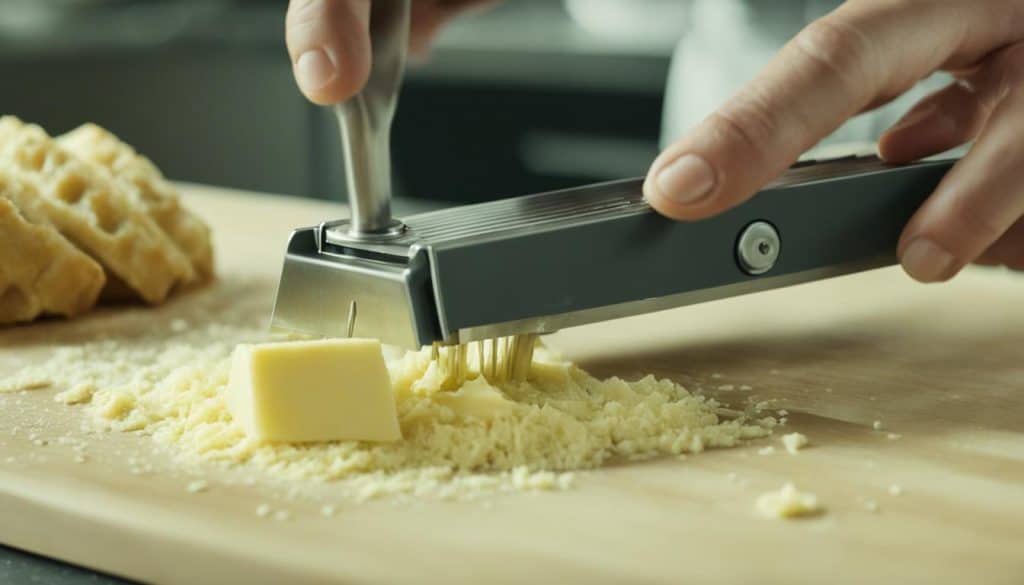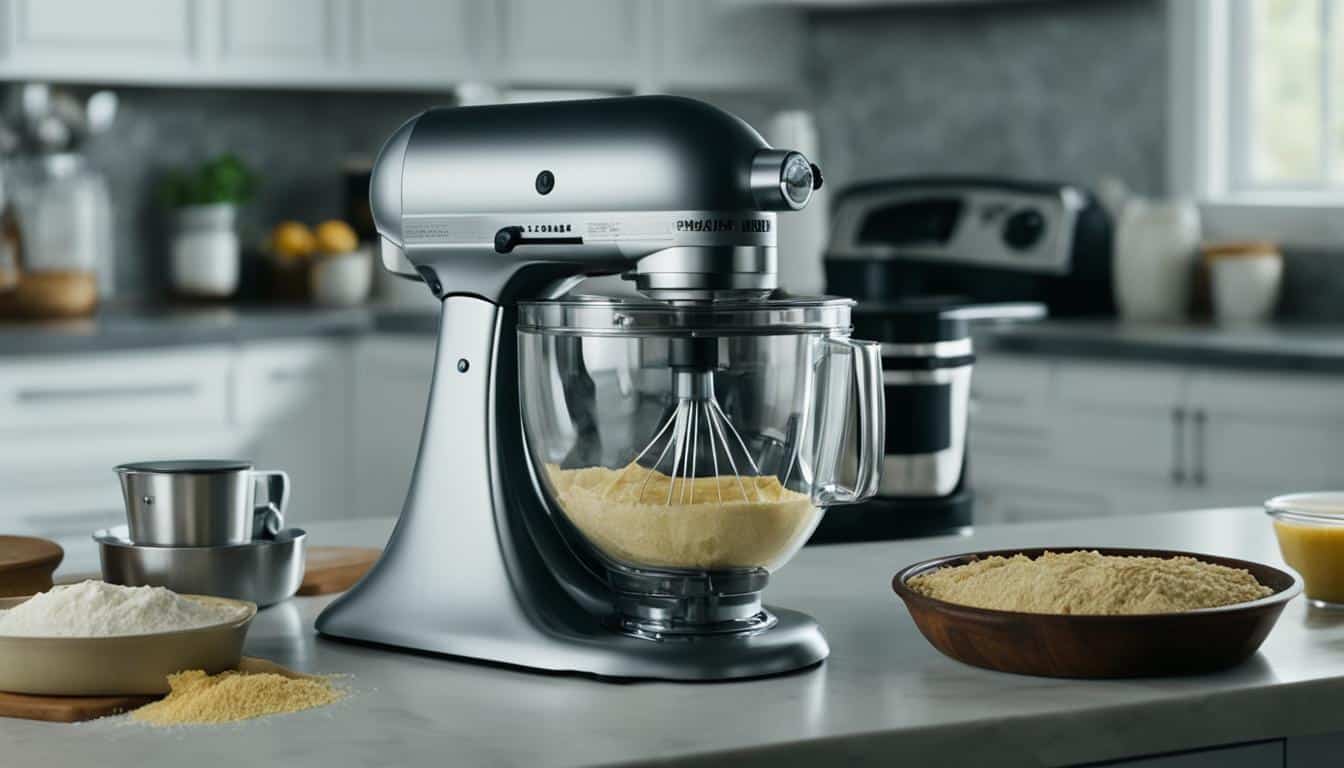To achieve bakery-quality pie crusts, investing in a quality food processor is essential. It saves time, effort, and ensures perfect results every time, with options from top brands like Cuisinart and KitchenAid. The right food processor, such as Cuisinart with a wider range of motor power and container sizes, can make a significant difference in achieving the perfect pie crust.
Conquering Crust: Food Processors vs. Blenders for Perfect Pie Dough
When it comes to achieving that perfect flaky texture in your pie crust, choosing the right kitchen appliance is crucial. While food processors and blenders have some similarities, they also have distinct differences that can affect the outcome of your pie dough.
Food processors have wider, more traditional blades that are designed to chop, puree, and mix solid and semi-solid foods. With a food processor, you can quickly and efficiently mix your pie dough without overworking it, resulting in a flaky and airy crust.
On the other hand, blenders are designed to create a smooth liquid consistency by blending ingredients at high speeds. While they can mix pie dough, the rapid movement can cause the gluten to develop quickly, resulting in a dense and tough crust.
To summarize, if you’re looking for a perfectly flaky and tender crust, a food processor is the way to go. However, if a blender is all you have available, try pulsing the ingredients instead of blending continuously to achieve a similar texture to using a food processor.
Slicing & Dicing Butter Dreams: Choosing the Right Blade for Flaky Pastry
When it comes to achieving a perfect flaky pie crust, selecting the right blade for your food processor is a crucial step.
Different types of blades can impact the texture and consistency of your dough, so it’s essential to choose the appropriate option for your desired outcome. Below, we’ll discuss the most common blade types and which ones are suitable for creating flaky pastry.
Standard S-Blade
The standard S-blade that comes with most food processors is versatile and can handle a range of tasks, including pie dough.
However, because the blade doesn’t have a lot of surface area, it can heat up the butter and lead to a denser crust. If you’re using this blade, pulse the dough instead of using a continuous blend, and use chilled butter to keep the temperature down.
Dough Blade
The dough blade, also known as a plastic blade, has a larger surface area than the standard S-blade, making it a better option for creating flaky pie crusts.
The blade’s unique shape allows for a more efficient blending of moisture and fat, ensuring your dough is consistent and not overworked. Use this blade for any recipe that requires a dough consistency.
Fine S edding Disc
The fine s edding disc is another option for creating pastry dough, though it’s not the most efficient for the job.
The blade is designed to s ed cheese and vegetables finely, and while it can handle the butter, it won’t effectively blend it with the flour and create the desired flaky texture. Reserve this blade for other tasks and stick to the standard S-blade or dough blade for making pie crusts.
| Blade Type | Pros | Cons |
|---|---|---|
| Standard S-Blade | Versatile, Included with most food processors | Possible butter heating, May lead to a denser crust |
| Dough Blade | Efficient blending, Consistent dough, Perfect for flaky pastry | Narrower application, Must be purchased separately |
| Fine S edding Disc | Creates fine s eds | Not suited for blending dough |
Choosing the right blade is a critical step in creating a perfect flaky pie crust. Consider investing in a dough blade if you don’t already have one, as its unique shape and large surface area make it perfect for blending moisture and fat consistently.

Cuisinart vs. KitchenAid: Showdown of the Pie-Dough Powerhouses
Both Cuisinart and KitchenAid are top contenders in the food processor market, but which brand reigns supreme when it comes to making pie crusts? Let’s take a closer look at their features and performance to determine which one is the best for your needs.
| Cuisinart | KitchenAid | |
|---|---|---|
| Motor Power | Offers a range of motor power options, including 600 watts, 720 watts, and 1000 watts, depending on the model. | The KitchenAid 11-cup food processor has a motor power of 340 watts, while the 14-cup model has a power of 360 watts. |
| Capacity | The Cuisinart food processors offer a range of container sizes, from 7 to 14 cups, giving you more versatility in the amount of dough you can make. | KitchenAid’s 11- and 14-cup models are ideal for making single batches of pie dough but can struggle with larger quantities. |
| Blades | Cuisinart offers an adjustable slicing disc that allows for precise control, along with multiple blades for chopping and mixing. | KitchenAid comes with a reversible s edding disc and a multipurpose blade for both dough and other foods. |
| Additional Features | Many Cuisinart models come with a dough blade that is specifically designed for making pie crusts. | KitchenAid’s ExactSlice System allows for easy adjustment of the slicing thickness, and some models come with a dicing kit for added versatility. |
Ultimately, both brands offer excellent functionality for making pie crusts, but Cuisinart’s wider range of motor power and container sizes, along with their specialty dough blade, may be the best choice for those who regularly make pies in different quantities.
On the other hand, KitchenAid’s ExactSlice System and additional features like the dicing kit may be more attractive to those who want more versatility in their food processor.
Size Matters: From Dough Delicate to Double Batches, Finding Your Perfect Capacity
When it comes to making pie crusts, having the right size and capacity food processor is crucial. You don’t want to struggle with a processor that’s too small for your needs or waste time using a large processor for smaller batches. So, how do you go about finding your perfect capacity?
First, consider the types of pie crusts you’ll be making. If you’re only making delicate tart crusts, a small-capacity processor will suffice. However, if you plan to make larger pies or double batches, a larger capacity processor is necessary.
Another factor to consider is the space you have available in your kitchen. If you have limited counter space, a smaller processor may be more practical. On the other hand, if you have ample counter space and plan to use your processor for other cooking tasks, a larger capacity processor may be a better investment.
It’s also important to consider the number of people you’ll be serving. If you frequently entertain or have a large family, a larger capacity processor will make your pie crust-making process much more efficient.
Ultimately, the perfect capacity for your pie crust-making needs will depend on your individual preferences and lifestyle. Take the time to consider these factors and choose a processor size that suits your needs.
By finding your perfect capacity, you’ll be well on your way to achieving bakery-quality results when making your favorite pie crusts. So, don’t overlook this important factor when choosing a food processor for your baking needs.


